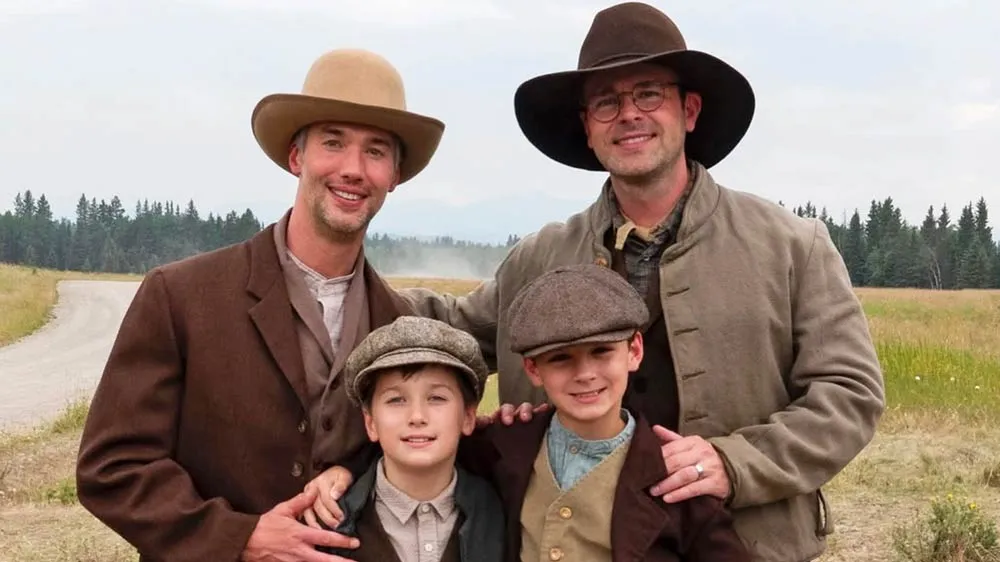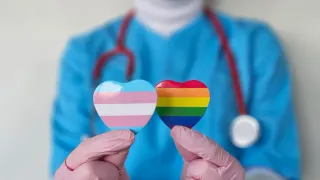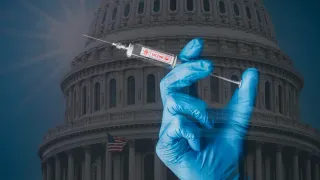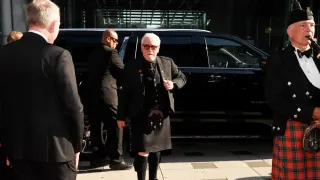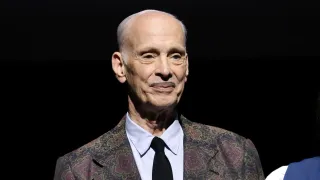October 9, 2024
'Studio One Forever,' Marc Saltarelli's Intimate Connection to the Iconic Nightclub
Steve Duffy READ TIME: 9 MIN.
Decades after the iconic Studio One nightclub closed its doors, its legacy for providing a beacon of hope to gay men remains. Positioned in West Hollywood – a famously queer area – it attracted a crowd that was in need of safety and freedom. Outside the venue's walls, the AIDS epidemic was ravishing their community and friends while the government paid little mind to this health crisis.
In "Studio One Forever," director Marc Saltarelli along with narrators Bruce Vilanch and David Del Valle explore this important venue. This documentary seeks to preserve the club's legacy and address the great impact it had on the community in general. It features confessional style interviews with notable figures such as Chita Rivera, Sam Harris, Felipe Rose, Charlo Crossley, and Melissa Rivers along with former Studio One bartenders and patrons.
Edge spoke to director Marc Saltarelli to learn more about the process of making this documentary.
EDGE: How did you get involved in this project?
Marc: It was way back in 2019, pre-pandemic. My friend Clifford Bell introduced me to his friends Lloyd Coleman and Gary Steinberg, who were producers at the Backlot in the eighties. The building was on the verge of getting demolished by a developer who wanted to build a multimillion-dollar hotel and fancy restaurants in the heart of gay town, West Hollywood. They were planning one last reunion – getting everyone who survived that era to return and put on a show. He wanted to document all of it. I had my own experiences of going to Studio One in the eighties when I moved to LA. I always assumed it was a cheap rip-off of Studio 54. When I started my research, two women, Kate and Chrissy, wanted to save it and turn this old crumbling factory building that was an eyesore back into a disco. To so many survivors, it meant not only their youth but it represented all of the joy and heartbreak of living through the AIDS crisis and watching their friends die. The thought of that going away for so many people was just too much. They showed up at city council meetings and convinced the city council to make arrangements to preserve it. I won't tell you what that was. You have to watch the movie. Kate and Chrissy interviewed many people I would also end up interviewing. They had a 40-page document because they were doing a historical preservation project to save it. When I read it, I had no idea that it started in 1974 and all the incredible things that happened there. A filmmaker cannot often find a story that has never been told. I did not take on this task or the responsibility of telling the story lightly. I hope that people will see and appreciate it, particularly the younger generation of queer people.
EDGE: Do you remember the first place you felt free as a queer person?
Marc: I came out at the University of Illinois in Urbana Champaign, and there was a bar that I went to. I was afraid to go there when my father and brother were in town. So, I went to summer school only so I wouldn't be seen walking into it. It's sad and strange, but for me, I had a lot of internalized homophobia. Back then, I was enjoying some of the benefits of gay rights, but as a Catholic guy, I still had a lot of homophobia. When I decided to move to LA, friends threw a party for me called Sweet Dreams, the song by the Eurythmics, and I remember my whole life changing. It was from darkness and fear to one morning. I walked outside and saw the trees and the leaves falling and the trauma being lifted from me. I was able to accept myself and was on the journey to being an out and proud gay guy.
EDGE: Studio One founder Scott Forbes has an elusive presence throughout the film. What were, if any, challenges to be fair to him?
Marc: Absolutely. Scott Forbes was an incredibly interesting character. He wore tight leather pants and loved hanging around with stars. He wanted to be a star himself. There were different opinions about Scott, but he was a businessman in a rough-and-tumble business, so he made many enemies. I found the people who knew him, like Carol Taylor, who was his assistant and started the first gay Disney Night and lived with him for a long period. She humanizes Scott in a way that some employees could not. I wanted to be fair to him. It was the seventies, and Scott's vision was to run a disco that was for white gay men only. I don't think he said that, but that's what he wanted. People of color and women were pretty much discouraged by the door policy. They created a "No Open Shoe" policy for women. There were protests and a boycott of Studio One. It was a huge deal in the seventies. As time progressed, Scott evolved. By the eighties, things had changed. Does that make Scott a racist? It's up to you to decide. I do hope that I gave a fair portrayal of Scott. In Palm Springs, our biggest fan base, we won the audience award and had three screenings. A guy who attended one of the Q&As raised his hand and said, "I'm Scott Forbes' nephew." I freaked out. He told me that Scott would be proud of the film, which made me feel good.
EDGE: Tell me about gathering all of that fascinating archival information.
Marc: It was a process. We had two days in the building. As soon as I started filming, I posted to Facebook to let people know what we were doing, and I received an avalanche of DM's, emails, photos, and stories. It was there for almost 20 years, and there are so many stories. We could make a whole series out of this, and we might someday. Some of the best footage was from Chris Brooks, who was a DJ. He's in the film. In the seventies, people didn't want to be filmed in a gay place because they could lose their jobs. He snuck a camera into the DJ booth and got this incredible footage of the dance floor that makes the film. His dance footage is amazing. I use it to show the joy and freedom but also the pain and agony of going through the AIDS crisis.
